
Knee
Understanding total knee replacement
Osteoarthritis affects nearly 350 million people worldwide.1 Those with osteoarthritis of the knee may experience pain, which may keep them from performing and enjoying simple daily activities. In order to treat this condition, your doctor may recommend you have knee surgery with a knee implant manufactured by MicroPort Orthopedics Inc. Facing surgery can be daunting. However, MicroPort Orthopedics has decades of experience producing revolutionary products which may improve the lives of patients such as yourself, struggling with pain and unable to live the active lifestyle you once did.

Knee anatomy
The knee joint is where the end of the thigh bone (femur) meets the top of the shin bone (tibia) and the knee cap (patella). The femur and tibia are connected by a set of muscles and ligaments, of which the thigh (quadriceps) muscles are primarily responsible for straightening the knee.
The knee joint is cushioned by cartilage that covers the ends of the femur and tibia, helping them to move smoothly against each other. On the tibia lie two crescent-shaped pieces of cartilage called menisci. The menisci act as shock absorbers for the knee. They also provide a pocket-like surface on the top of the tibia for the femur to sit in. This pocket increases the stability of the knee and prevents it from sliding during activities. In a knee joint that has osteoarthritis (Arthritic Knee), the cartilage wears down and bone begins to rub on bone. This creates pain and reduces the function of the knee.
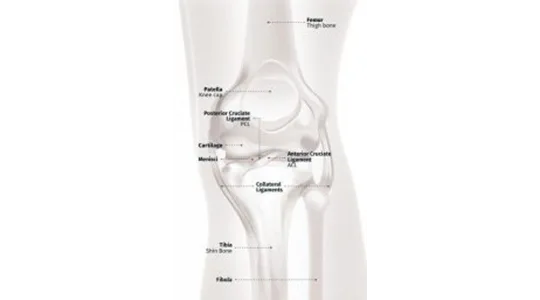
Why does my knee hurt?
The knee joint is where the end of the thigh bone (femur) meets the top of the
There are a variety of conditions that can lead to knee joint deterioration, resulting in pain, reduced range of motion, and decreased quality of life. When cartilage in the knee joint is damaged or worn down by disease, your knee bones begin to rub together, resulting in friction, pain, and even bone deterioration. Worn cartilage is typically associated with osteoarthritis, the most common type of arthritis leading to knee replacement. Osteoarthritis is just one of the many forms of arthritis, which can result in individuals experiencing pain and limited activity level. Other forms of arthritis include: Rheumatoid Arthritis, Traumatic Arthritis, and Non-Arthritic Trauma.
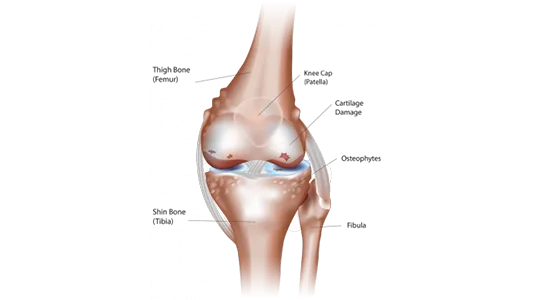
Diseases of the knee

WHAT IS OSTEOARTHRITIS?
Osteoarthritis is a common condition in which the cartilage that normally cushions the bones of a joint gradually begins to wear, causing the bones to rub together. Osteoarthritis of the knee is common because most of the body’s weight is carried by the knee joint. This can make the knee wear out more quickly than other joints. Symptoms include pain, swelling, and changes in appearance and function of the joint, which can contribute to loss of motion.

WHAT IS TRAUMATIC ARTHRITIS?
Traumatic arthritis results when the joint, or the ligaments surrounding it, are damaged by fracture, dislocation, or other accident-related injury. All arthritic conditions result in stiffness, swelling, and the loss of motion. It becomes difficult to put pressure on the knee, and the joint becomes increasingly tender and swollen. As time passes, arthritis of the knee can significantly affect your ability to walk.

WHAT IS RHEUMATOID ARTHRITIS (RA)?
Rheumatoid arthritis occurs when the body’s own immune system attacks the synovial lining of the joints, just as it would foreign bacteria. Synovial fluid is a clear, smooth, oil-like lubricating liquid that makes it easier for the joints to move. With RA, there is more friction in every movement of the knee and this causes pain.

WHAT IS NON-ARTHRITIC TRAUMA?
In addition to arthritis, knee replacement surgery may be recommended for individuals whose knee has been injured as the result of trauma. This could be a knee fracture or dislocation caused by a fall or other injury to the knee.
Before recommending surgery, your doctor may have considered other treatments for your knee pain. Total knee replacement (commonly known as TKR) is one of the most successful treatments to restore knee function and stop arthritic pain, and may be recommended by your doctor.
The goal of the surgery is to replace the arthritic surfaces of the bones with smooth artificial surfaces made of metal and plastic. These new surfaces are designed to closely mimic normal knee function, while also preventing pain caused by the damaged ends of the bones rubbing together.
Precision instruments are utilized to reshape the ends of the bones to accept the artificial knee implant. A metal “tray” is placed on top of the tibia. An implant-grade plastic (polyethylene) insert is locked into the top of this tray.
The plastic now acts as the cushioning cartilage and menisci. Next, a highly polished, implant-grade metal component is placed on the end of the prepared femur. Finally, the underside of the patella (knee cap) may be removed and replaced with a plastic dome that will slide against the new joint.
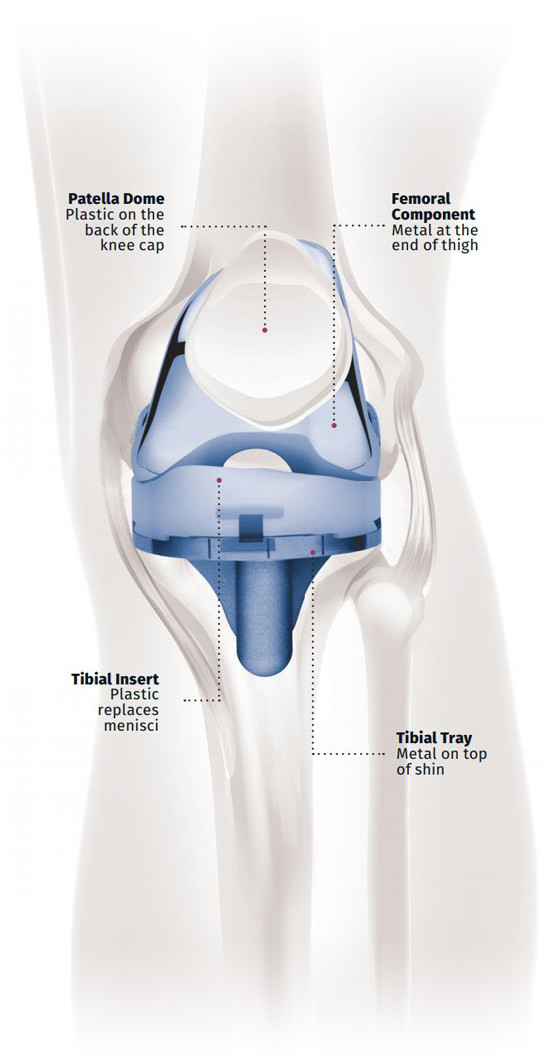
Through innovation in implant technology and less invasive surgical techniques, MicroPort is continually working to create products that can dramatically improve the lives of patients.
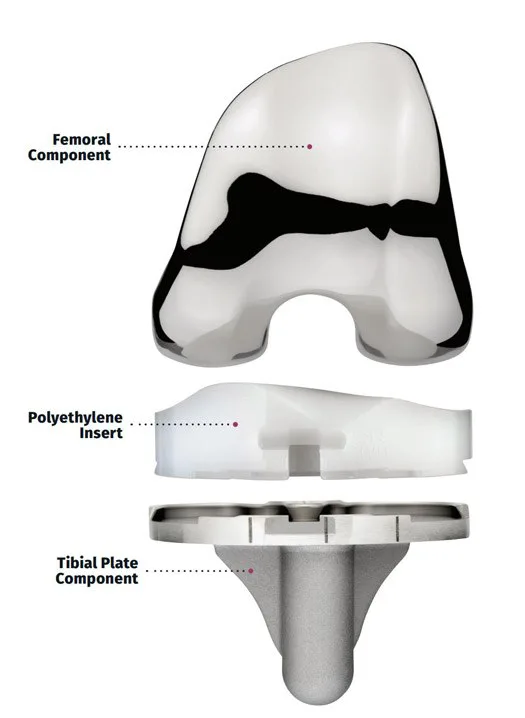
Patient resources
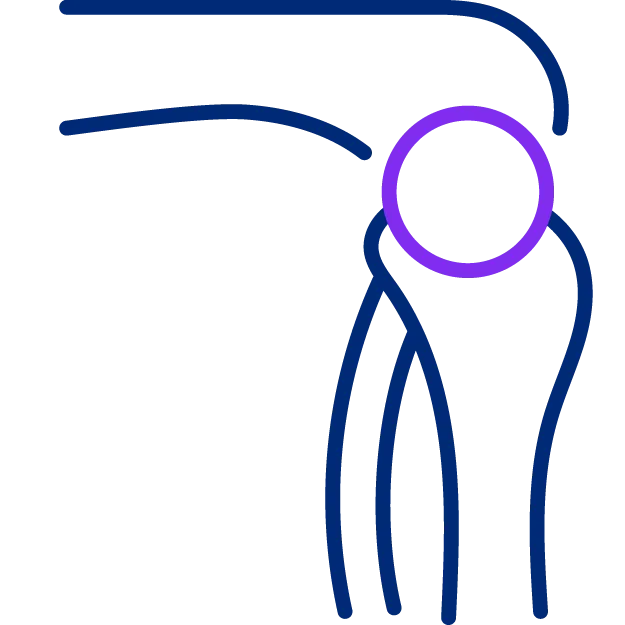

PRECAUTIONS & DISCLAIMERS
Every patient is different, and individual results will vary. There are risks and recovery times associated with surgery. Consult your doctor to determine if joint replacement surgery is right for you.
Individual results and activity levels after surgery vary and depend on many factors including age, weight and prior activity level. There are risks and recovery times associated with surgery and there are certain individuals who should not undergo surgery. Please click here to read about risks associated with surgery. Only a physician can tell you if this product and associated procedure are right for you and your unique circumstances. Please consult with a physician for complete information regarding benefits, risks and possible outcomes.
REFERENCES